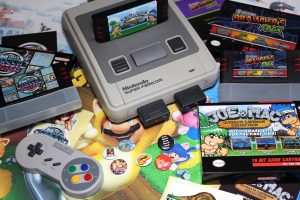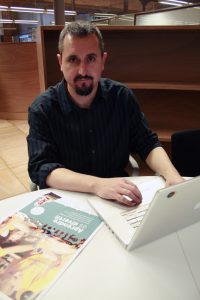Nintendo : From a Small Card Company to World’s Largest Video Game Maker
There might merely be a person, who has not heard of Mario. The magical mission game that engaged every single child with entertainment and amusement was not just famous among the children, but, was also the first choice of every teenager, and adult. It is also one of the best-selling video games in history.
Everybody is familiar with this amazing video game, but not every person would have heard of the name of the company that produced it. Nintendo is a name that started with the production of playing cards and ended up in becoming one of the biggest producers of video games in the world. Nintendo not only have Mario to its credits but have introduced multiple entertaining games and gaming consoles to the world.
Nintendo a Playing Card Company
Nintendo was founded by a Japanese entrepreneur, Fusajiro Yamauchi, as a playing card company in Kyoto, Japan, on 23 September 1889. At the time, the foreign card games were banned in Japan, and not from twenty or thirty years, but since 1633, almost 250 years. Many people had tried making different card games, but eventually, all of them were banned too.

Meanwhile, a playing card game Hanafuda was developed. The game was played with handmade cards, which instead of numbers had illustrations on it. The game escaped the ban and became popular in no time. Nintendo started making good profits with the production of those cards, and Yamauchi had to employ assistants to lower down the workload.
In 1949, the company was renamed as Nintendo Karuta Co., Ltd., and started operating outside Japan, as The Nintendo Playing Card Co. By the time, Yamauchi’s grandson had also joined the company, and in 1956, he flew to the USA, to expand the business overseas. He found out that the playing card market in the USA had quite limited potential, so he decided to take advantage of this opportunity and got the license from Disney, to print Disney cartoon characters on the playing cards.
Till 1963, the company had experimented with various other businesses as well, including taxi service, a love hotel chain, a TV network, a food company, etc. At the same time, the playing card game was also facing a drop in its popularity.
In 1966, the company entered into the toy business and with the help of maintenance engineer of the company, Gunpei Yokoi, developed the Ultra Hand, an extendable toy arm. The company produced many other toys, but it was taking a little longer for Nintendo to establish itself as one of the leading toy maker company.
In 1973, the company started developing family entertainment venues with the Laser Clay Shooting System, in which the participants used a light gun for shooting. The idea was a hit, but the company had to shut it down soon, maintaining it was way too expensive.
Success in Video Games
In 1974, Nintendo managed to get the rights to distribute the commercial home video game console, Magnavox Odyssey, in Japan. By 1977, the company started the manufacturing of Color TV-Game home video game consoles. It also produced arcade games with EVR Race.
In 1981, with the release of Donkey Kong, Nintendo experienced real success. The next release from Nintendo was a handheld video game, that was also an immediate hit.
In 1985, Nintendo launched a platform video game named the Super Mario Bros., a successor to the 1983 arcade game, Mario Bros., for the Famicom, and in North America and Europe for the Nintendo Entertainment System. Along with Super Mario Bros., Nintendo holds the credit of many other famous games including NES, Game Boy, SNES, Nintendo 64, and Game Boy Advance SP.
In 1995, Nintendo announced that it had sold one billion game cartridges worldwide. At the same time, Nintendo bought 25% shares in another video game development company Rare and developed a CGI game through this partnership. The game was an instant success and became the second best-selling game in the SNES library.
Next big release from Nintendo was the Nintendo DS and Wii, between which, the Wii console became the best seller and was released in 2006. Among the handheld video games, the Nintendo DS Lite is the best-selling handheld console of all time.

Yashica is a Software Engineer turned Content Writer, who loves to write on social causes and expertise in writing technical stuff. She loves to watch movies and explore new places. She believes that you need to live once before you die. So experimenting with her life and career choices, she is trying to live her life to the fullest.



